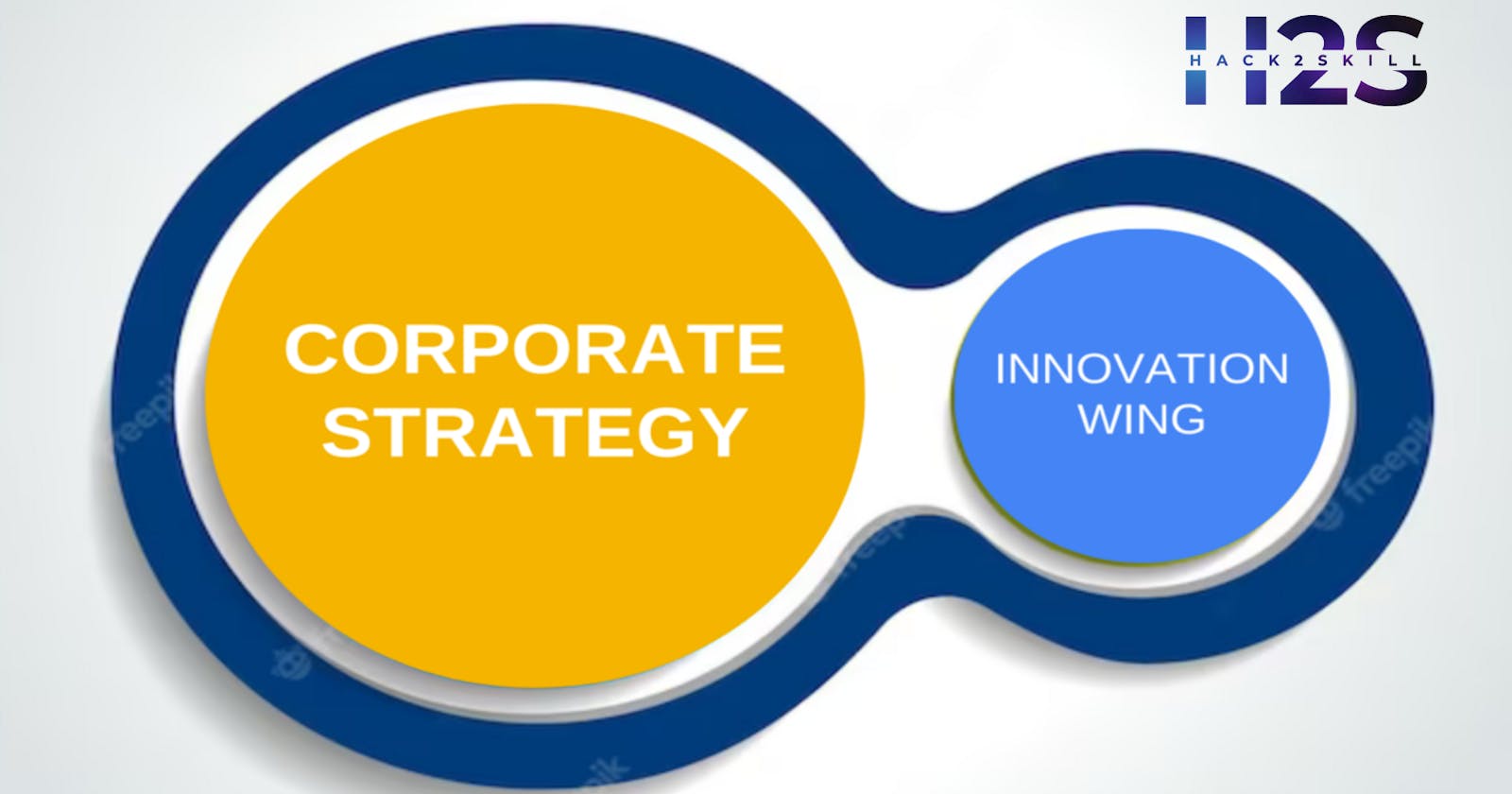Do you know what is one of the biggest obstacles that corporations are facing these days?
It is the constant pressure to stay competitive in this ever-changing & evolving business world. Innovation is not a one-time thing. It is not a one-time pet project where we can assign resources, make a checklist and get it delivered to our desk. It’s a continuous process. One of the major differences between the bring-me-your-ideas approach and innovation management is the results. The latter offers tangible results. Real solutions.
While some businesses have turned to startups for their innovative solutions, others have taken a different or combined approach - creating an innovation wing within their corporation. This independent wing is owned by the parent company itself with a sole focus on innovation.
To name a few examples that have found excellence in this method are ‘Upnext’ - an independent organisation based out of Europe (including France, Germany, Spain and the United Kingdom) focussed on building flying demonstrators with future technologies. The other one is ‘Acubed’ - a digital innovation focussed organisation based out of the United States (specifically in Silicon Valley).
The experience with both organisations has been overwhelmingly positive as the model offers the agility and speed of startups and the resources and stability of corporates.
The hybrid innovation model is based on creating a separate entity whose sole focus is to drive innovation by simplifying process flows, dedicated human resources, procurement and branding according to the fast-changing requirements of your business. Once the project is completed, the results are infused back to the corporation. Sometimes, the project team stays back to develop the innovative product for a smooth transfer of knowledge and expertise. Let’s discuss the pros and cons of this model in detail.
Benefits of the Hybrid Innovation Model
This model leverages the speed of decision making which is generally observed in startups.
UpNext is actively engaged in various projects aimed at exploring and implementing novel pilot assistance technologies to enhance flight safety and aircraft operational efficiency. Additionally, they are diligently working on developing autonomous air-to-air refuelling technologies and investigating the impact of hydrogen combustion on contrail properties.
Similarly, Acubed's focus lies in cutting-edge projects such as a machine-learning solution for autonomous flight and a digital platform that revolutionises aerospace design and manufacturing. Furthermore, their multifunctional team is dedicated to modernising and scaling air traffic management approaches.
A notable example of successful knowledge transfer is the Vertex project, spearheaded by UpNext. The knowledge, expertise, and innovative ideas generated during this venture were seamlessly transferred back to the parent corporation, enabling rapid capitalization on these advancements and their integration into the core business.
This approach has proved instrumental in maintaining a competitive edge in today's business landscape and attracting top talent from both within and outside the company.
Challenges of the Hybrid Innovation Model
One of the major challenges is continued strategy alignment between corporate and satellite organisations. While this decentralised approach allows for specialisation and localised decision-making, it can also lead to potential misalignment and fragmentation of strategies. We can overcome this through clear communication, shared goals & KPIs, and regular reviews & feedback.
Another challenge can be the diversity of cultures. Satellite organisations may have distinct work cultures, values, and approaches to problem-solving, which can influence their interpretation and implementation of the corporate strategy.
We also encountered an NIH - Not Invented Here syndrome i.e.; the tendency to not accept the ideas or solutions which the employees didn’t create themselves. It can be taken care of by aligning internal team resources with the innovation wing members to create a sense of collaboration.
Another challenge was as the business conditions are dynamic, both corporate and satellite units need to adapt accordingly. Ensuring alignment in the face of changing circumstances is an ongoing challenge.
By tackling these obstacles and others, we can establish the right equilibrium between independence and supervision within the organisation. A well-crafted approach that incorporates both in-house and external expertise, will ensure a seamless harmony between corporate and satellite strategies. To gauge our achievements, we employ precise metrics, including project completion rates, efficiency in knowledge and employee transfer, and the overall value of innovations integrated back into the parent corporation.
Conclusion
The hybrid innovation model revolutionises the way corporations embrace the advantages of both the corporate and startup realms. It allows corporations to create a dynamic and agile ecosystem that not only attracts top talent but also expedites the development and testing of novel concepts. Despite the challenges that come with adopting this approach, its potential benefits make it a compelling choice for corporations seeking to foster innovation and drive growth in today's fast-paced business landscape.
By blending the best attributes of corporate and startup environments, corporations can effectively tackle challenges and capitalise on opportunities in an increasingly competitive business landscape.
By finding the right equilibrium of autonomy, oversight, and unwavering commitment to innovation, corporations embracing the hybrid innovation model can transform their approach to innovation and maintain a competitive edge in the ever-evolving business world.

